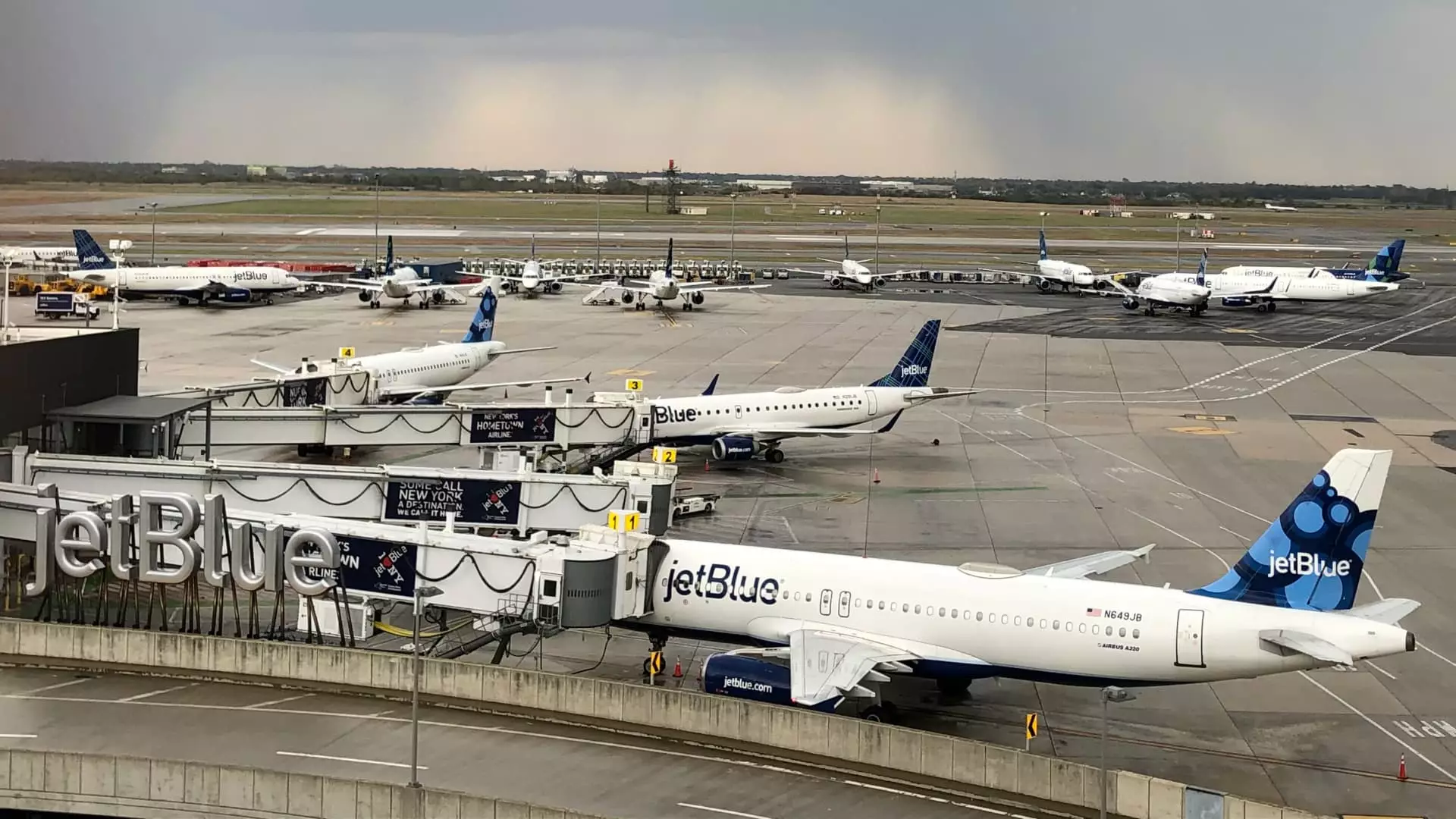JetBlue Airways, a stalwart in the low-cost airline sector, is undergoing a significant transformation as it prepares to unveil its first airport lounges. This groundbreaking initiative not only marks JetBlue’s foray into the niche of luxury air travel amenities but also signifies a strategic pivot aimed at attracting high-paying clientele. With plans to establish lounges in its main hubs—New York and Boston—JetBlue is positioning itself to compete with industry heavyweights like Delta Air Lines and United Airlines, which have successfully monetized luxury offerings while enhancing customer loyalty through premium services.
The lounges are slated to debut in late 2024 at New York’s John F. Kennedy International Airport and shortly thereafter at Boston Logan International Airport. This move indicates a robust intention to cater to the growing demand for upscale travel experiences, thus redefining the perception of a budget airline in an increasingly competitive marketplace. By investing in amenities similar to those offered by more established carriers, JetBlue aims to enhance its brand presence and revenue generation.
As part of this strategic revamping, JetBlue will partner with Barclays to introduce a premium credit card, mirroring the success seen by competitors. This card is expected to be an essential vehicle for driving loyalty, with benefits tailored for those who frequently fly in JetBlue’s Mint business class, a category created for the airline’s transatlantic routes. This new offering aligns nicely with JetBlue’s broader ambitions to monetize high-value travelers while ensuring that the experience they offer is unparalleled.
JetBlue’s decision to limit lounge access to select customers—with entry provided primarily to Mint business class passengers, high-tier frequent flyers, and the upcoming premium cardholders—demonstrates a deliberate strategy aimed at managing exclusivity. Jayne O’Brien, JetBlue’s head of marketing and customer support, acknowledged the intention to maintain a comfortable atmosphere within the lounges, steering clear of overcrowding which could compromise customer experience.
Expectations surrounding the lounges point to a sophisticated design that includes a cocktail bar, espresso machines, and spaces conducive to both relaxation and productivity. By emphasizing a blend of comfort and utility, JetBlue is appealing directly to the evolving tastes of modern travelers who increasingly seek out enriched pre-boarding experiences. O’Brien articulated this vision by stressing the need for a thoughtful approach to the lounge entrance policies. This proactive stance is essential for preserving a quality experience, particularly in a sector where customer satisfaction is pivotal to brand loyalty.
Notably, this strategic pivot reflects an ongoing trend across the airline industry, where providing high-end amenities has increasingly become a focal point for attracting affluent customers. With airlines like Delta, American, and United setting benchmarks for luxury in air travel, JetBlue’s entrance into this space could potentially redefine its brand image from being purely low-cost to one that caters to a diverse clientele.
The changes initiated by JetBlue mirror wider industry trends where airlines are intensifying efforts to enhance customer offerings. For instance, Delta’s recent revamps of its Sky Clubs aim to mitigate overcrowding while increasing exclusivity, giving preferential treatment to top-tier members. Furthermore, American Airlines and United have also established dedicated lounges for premium class passengers, further setting the standard in air travel luxury.
Moreover, as budget carriers like Southwest Airlines consider adding new seat classes with more legroom, it is clear that the low-cost airline model is evolving. JetBlue’s decision to provide upscale amenities suggests a strategic pivot that sees potential value in reshaping the budget segment of the market by offering a taste of luxury while retaining its core identity.
As JetBlue embarks on this ambitious journey to integrate airport lounges into its service offerings, it is not only seeking to attract a more affluent audience but also reshaping the broader landscape of budget air travel. The intentional focus on premium amenities lays the groundwork for a potentially lucrative strategy that could redefine customer expectations across the industry. As the airline progresses toward its implementation, the results of this shift will be keenly observed by competitors and travelers alike.


Leave a Reply